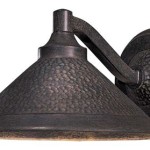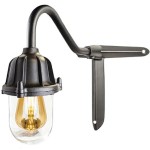How To Restain An Outdoor Table
Outdoor furniture, especially wooden tables, is subjected to harsh weather conditions, leading to fading, discoloration, and deterioration over time. Restaining an outdoor table not only restores its beauty but also provides a protective layer against the elements. This process involves removing the old finish, preparing the surface, and applying a new stain. This guide will provide you with a comprehensive overview of how to effectively restain an outdoor table, ensuring a long-lasting and aesthetically pleasing finish.
1. Preparing the Table for Restaining
Before embarking on the staining process, it is crucial to prepare the table thoroughly. This involves stripping the existing finish, cleaning the surface, and sanding to achieve a smooth and even finish.
Stripping the Old Finish: The first step is to remove the existing stain or paint. This can be achieved using a chemical stripper, which is applied to the surface and left to sit for a designated period. The stripper softens the old finish, allowing it to be scraped off with a putty knife or a paint scraper. Pay attention to the manufacturer's instructions for safe handling and application.
Cleaning the Surface: Once the old finish is removed, meticulously clean the table using a mild detergent and water. This step removes any remaining residue from the stripper and ensures a clean surface for the new stain to adhere to. It is essential to rinse the surface thoroughly and allow it to dry completely before proceeding to the next step.
Sanding the Table: Sanding the table after cleaning creates a smooth surface for the stain to penetrate evenly. Start with coarse-grit sandpaper (80-grit) to remove any remaining imperfections or rough spots. Gradually progress to finer grits (120-grit, then 220-grit) for a smoother finish. Sanding in the direction of the wood grain enhances the appearance and helps the stain adhere better.
2. Choosing the Right Stain
Selecting the appropriate stain is crucial for achieving the desired aesthetic effect and providing adequate protection for your outdoor table. Consider the following factors when making your choice:
Wood Type: Different wood species have varying characteristics that affect how they absorb and react to stains. Some woods, like cedar or redwood, have natural oils that can repel stains, requiring the use of specialized products.
Stain Type: There are various types of stains available, each with its unique properties and intended use. Oil-based stains offer deep penetration and a rich, natural look. Water-based stains are easier to clean up and dry faster. Choose a stain that aligns with the desired finish and meets your specific needs.
Color and Finish: Consider the desired color and level of transparency. Transparent stains allow the wood's natural grain to show through, while solid stains provide a more opaque finish. Experiment with different color swatches or consult with a paint professional for guidance.
3. Applying the Stain
Once the table is prepared and the stain is chosen, it's time for the application process. The following steps ensure a smooth and even application:
Pre-Stain Conditioner: For certain wood types, applying a pre-stain conditioner before staining can help to create a more uniform finish. It evens out the wood's porosity, preventing areas from absorbing more stain than others.
Stain Application: Use a natural bristle brush or a clean cloth to apply the stain to the surface. Follow the direction of the wood grain for a consistent look. Work in small sections, allowing the stain to penetrate before moving to the next area.
Wipe Excess Stain: After applying the stain, wipe off any excess with a clean cloth. This step helps to remove any pooling or uneven areas, leaving a smooth and even finish.
Drying Time: Allow the stain to dry completely before applying a sealant. The drying time will vary depending on the stain type and the weather conditions. Check the manufacturer's instructions for specific drying times.
4. Sealing the Stain
Sealing the stain provides a protective barrier against the elements, extending the life of the finish. Choose a sealant that is compatible with the stain type and provides the desired level of protection.
Types of Sealants: Polyurethane sealants offer excellent protection against water and UV damage. Acrylic sealants are water-based and provide good protection while being easier to clean up.
Application: Apply the sealant using a brush or a roller, following the direction of the wood grain. Avoid applying the sealant too thickly, as it can trap moisture and prevent the wood from breathing. Allow the sealant to dry completely before using the table.
Maintenance: Regular maintenance is crucial for preserving the stain and sealant. Clean the table periodically with a mild cleaner and apply a fresh coat of sealant every few years, depending on the climate and usage.

Refinish Outdoor Wood Furniture Easy With Stain Artsy Rule

How To Re Wooden Outdoor Furniture The Honeycomb Home

How To Re Wooden Outdoor Furniture The Honeycomb Home

How To Refinish Outdoor Wood Furniture With A Solid Stain

Refinish Outdoor Wood Furniture Easy With Stain Artsy Rule

How To Refinish Outdoor Wood Furniture With A Solid Stain

How To Refinish Outdoor Wood Furniture In Easy Steps

How To Refinish Outdoor Wood Furniture With A Solid Stain

How To Re Your Wood Furniture With Teak Oil Ramsle Glam

How To Make Old Outdoor Timber Furniture Look New Again Better Homes And Gardens







